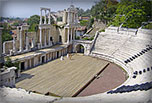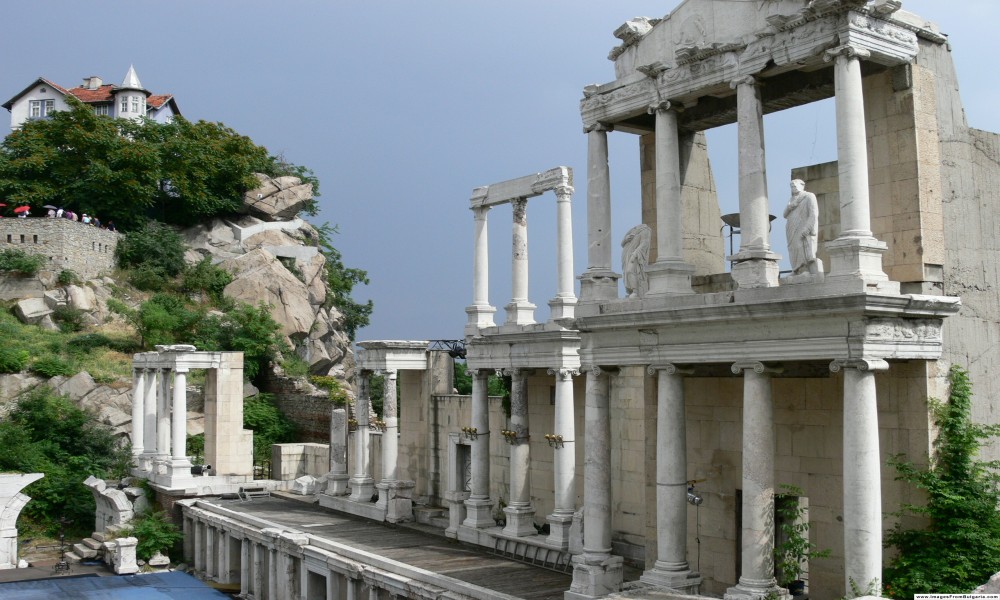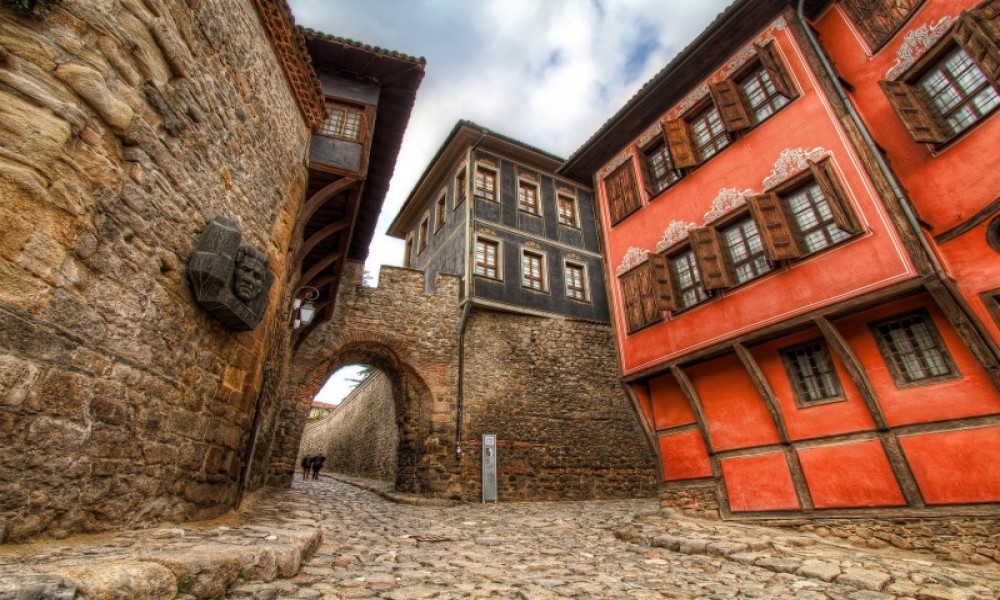Sightseeing
The Roman theatre (Antichen teatur) is probably the best known monument from Antiquityin Bulgaria. It was built in the beginning of the 2nd century during the reign of the RomanEmperor Trajan. It is situated in the natural saddle between the Dzhambaz Tepe and Taksim Tepe hills. It is divided into two parts with 14 rows each divided with a horizontal lane. The theatre could accommodate up to 7,000 people. The three-story scene is located on the southern part and is decorated with friezes, cornices and statues. The theatre was studied, conserved and restored between 1968 and 1984. Many events are still held on the sceneincluding the Verdi festival and the International Folklore festival. The Roman Odeon was restored in 2004. It was built in the 2nd-5th centuries and is the second (and smaller) antique theatre of Philipopolis with 350 seats. It was initially built as a bulevterion - edifice of the city council - and was later reconstructed as a theatre.

The Roman Stadium is another important monument of the ancient city. It is situated between Sahat Tepe and the Three Hills in the modern Dzhumaya Square. It was built in the 2nd century and modeled after the stadium in Delphi. In Roman times it could hold 30,000 spectators. Only a small part of the northern section with 13 seat rows can be seen nowadays - the larger part lies under the main street and a number of buildings.
The Roman forum dates from the reign of Vespasian in 1st century and was finished in the 2nd century. It is located near the modern post office next to the Odeon. It has an area of 11 hectares and was surrounded by shops and public buildings. The forum was a focal point of the streets of the ancient city.
The Eirene Archaeological complex is located in the southern part of the Three Hills on the northern part of an ancient street in the Arheologicheski underpass. It includes remains of a public building from the 3rd-4th centuries which belonged to a noble citizen. Eirene is the Christian name for Penelopa - a maiden from Megadon who was converted to Christianity in 2nd century. There are colourful mosaics which have geometrical forms and figures.
On Nebet Tepe are found remains of the first settlement on the Three Hills which in 12th century BC grew to the Thracian city of Eumolpias, one of the first cities in South-eastern Europe. Massive walls surrounding a temple and a palace have been excavated. The oldest part of the fortress was constructed from large syenite blocks - the so called "cyclop construction".
The Archaeological Museum was established in 1882 as a People's Museum of Eastern Rumelia. In 1928 the museum was moved to a 19th century edifice on Saedinenie Square built by the famous Plovdiv architect Josef Schnitter. The museum contains a rich collection of Thracian art. The three sections "Prehistory", "Antiquity" and "Middle Ages" contain precious artifacts from the Paleolithic to the early Ottoman period (15th-16th centuries). The famousPanagyurishte treasure is part of the museum's collection.

The Historical Museum of Plovdiv was founded in 1951 as a scientific and cultural institute for collecting, saving, and researching historical evidence about Plovdiv and the region from 16th to 20th centuries. The exhibition is situated in three buildings.
The Regional Ethnographic Museum - Plovdiv was inaugurated in 1917. On 14 October 1943 it was moved to a house in the Old Town. In 1949 the Municipal House-museum was reorganized as a People's Ethnographic Museum and in 1962 it was renovated. There are more than 40,000 objects.
The Museum of Natural Science was inaugurated in 1955 in the old edifice of the Plovdiv Municipality built in 1880. It is among the most important museums in the country with rich collections in Paleontology, Mineralogy and Botanic sections. There are several rooms for wildlife and it contains Bulgaria's largest freshwater aquarium with 40 fish species.It has a collection of minerals from the Rhodope mountains.
The Museum of Aviation was established on 21 September 1991 on the territory of the Krumovo airbase 12 km to the south-east of the city. The museum possesses 59 aircraft and both indoor and outdoor exhibitions.
The Old Town of Plovdiv is a historic preservation site known for its Bulgarian Renaissance architectural style. The Old Town covers the area of the three central hills (Трихълмие, Trihalmie) —Nebet Tepe, Dzhambaz Tepe and Taksim Tepe. Almost every house in the Old Town has its characteristic exterior and interior decoration.
There are a number of 19th century churches, most of which follow the distinctive Eastern Orthodox construction style. Those are the Saint Constantine and Saint Helena, the Saint Marina, the Saint Nedelya, the Saint Petka and the Holy Mother of God Churches. There are also Roman Catholic Cathedrals in Plovdiv, the largest of them being the Cathedral of St Louis. There are several more modern Baptist, Methodist, Presbyterian, and other Protestant churches, as well as older style Apostolic churches. Two mosques remain in Plovdiv from the time of the Ottoman rule. Of them the Djumaya Mosque, is considerred the oldest European mosque outside Moorish Spain. There is also a synagogue.
























